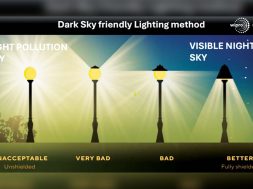Wood foam could replace plastics for thermal insulation
Insulation materials of tomorrow must be both efficient and environmentally friendly. Fraunhofer scientists are developing insulation foam made from wood that could replace petrochemical plastics in the long term
Climate protection is now a mandatory consideration for every building contractor. The key to reduce energy consumption of a building lies in the way we insulate our walls and roofs, as effective insulation prevents large amounts of our valuable thermal energy escaping unused. Buildings are insulated by lining their facades with materials that reduce the transfer of heat to the outside environment. Traditionally the construction industry uses hardboards or expandable foams based on petrochemical plastics because they are good insulators that are affordable and easy to produce. But these materials are not particularly kind to the environment, so the long-term objective is to replace petroleum based products with materials derived from renewable resources.
Researchers at Germany’s Fraunhofer Institute for Wood Research, however, have developed a reportedly greener alternative that they claim works just as well – it’s foam made from wood.
“Our wood foam can be used in exactly the same way as conventional plastic spray foams, but is an entirely natural product made from sustainable raw materials,” explains Professor Volker Thole of the WKI. The scientists produce the foam by grinding wood very finely until the tiny wood particles become a slimy mass. They then add gas to this suspension to expand it into frothy foam that is then hardened. The hardening process is aided by natural substances contained in the wood itself. In an alternative method, specific chemical processes are used to produce the final product. “It’s a bit like baking, when the dough rises and becomes firm in the oven,” Professor Thole explains. Wood foam is a lightweight base material that can then be made into rigid foam boards and flexible foam mats.
Insulates as good as conventional plastic foams Wood-based insulation materials are nothing new, but the products that are currently available have drawbacks. For instance, mats made from wood fibres and wood wool tend to shed fibres as they fibrillate and are less stable in shape than insulation materials made of plastic. “Over time, the currently used insulation mats made of wood fibres tend to sink in the middle due to temperature fluctuations and damp. This to some extend adversely affects its insulating properties,” says Prof. Thole. The wood foam developed at the WKI, however, is as good as conventional plastic foams in this regard, he claims. “We analysed our foam products in accordance with the applicable standards for insulation materials. Results were very promising; our products scored highly in terms of their thermo-insulating and mechanical properties as well as their hygric, or moisture-related, characteristics,” Prof. Thole reveals.
The Braunschweig-based scientists are currently experimenting with different types of wood to discover which tree species make the best basis for their product. Furthermore, they are working out suitable processes for mass-producing wood foams on an industrial scale. This innovative material could also be used in areas other than insulation, such as packaging. Packing materials made from wood foam would provide a long-term alternative to yet another oil-based product: expanded polystyrene.
Cookie Consent
We use cookies to personalize your experience. By continuing to visit this website you agree to our Terms & Conditions, Privacy Policy and Cookie Policy.









